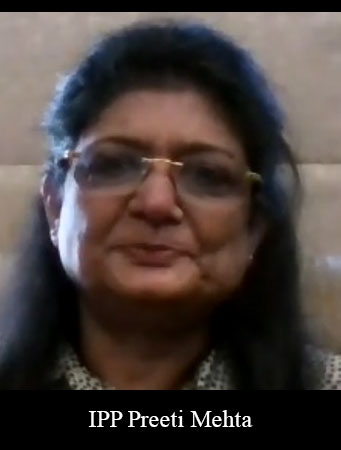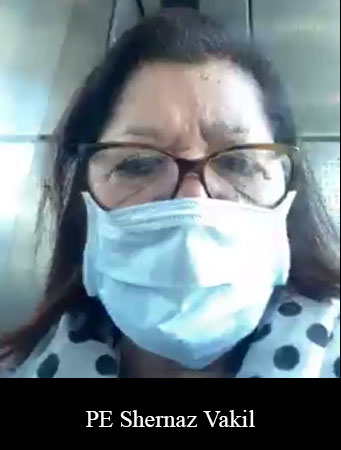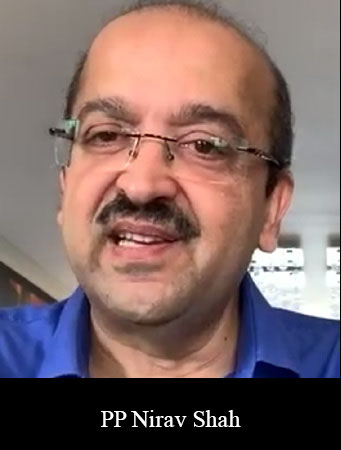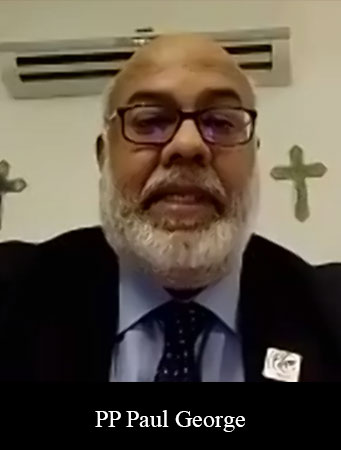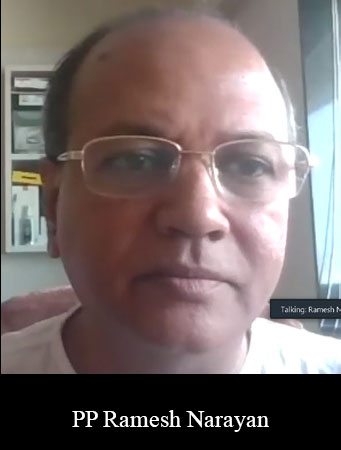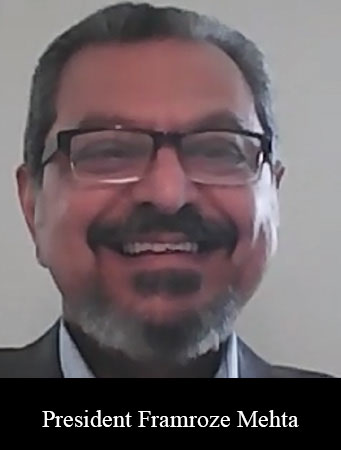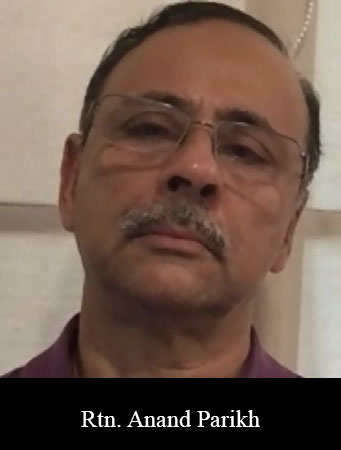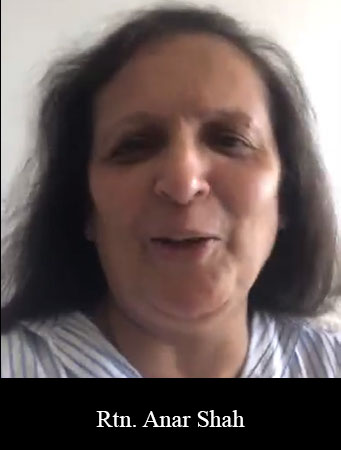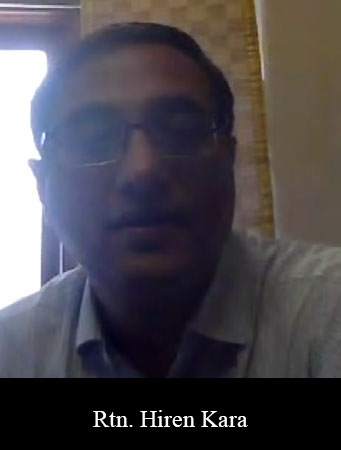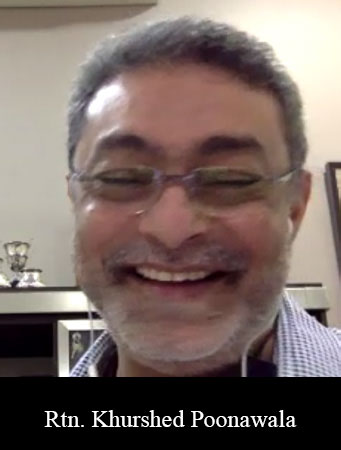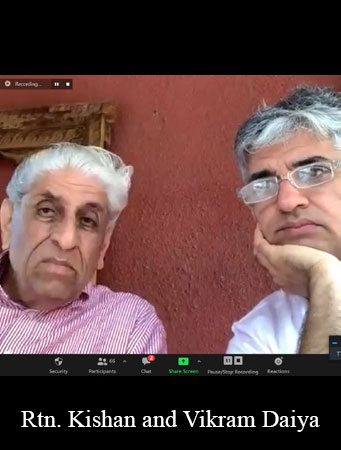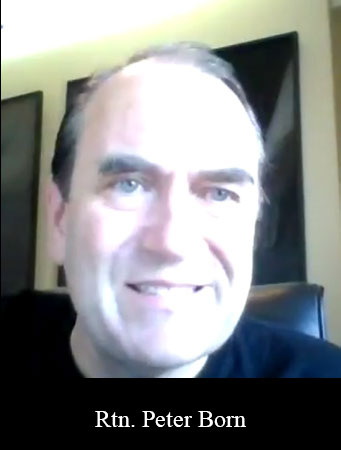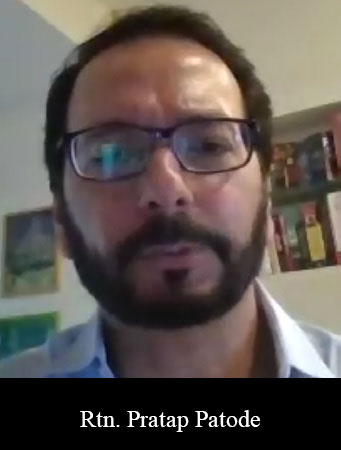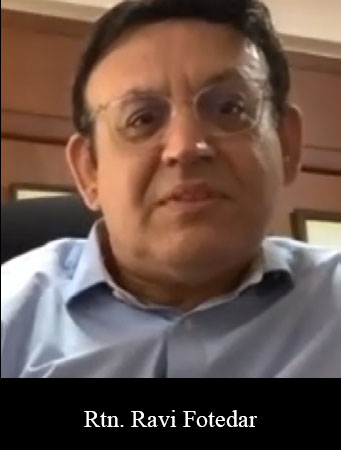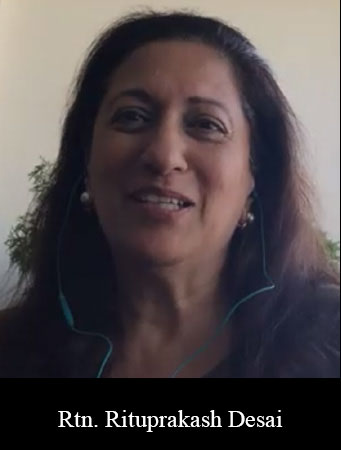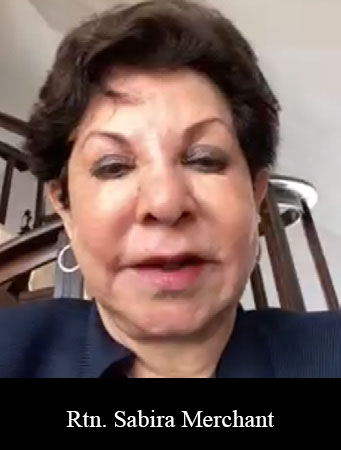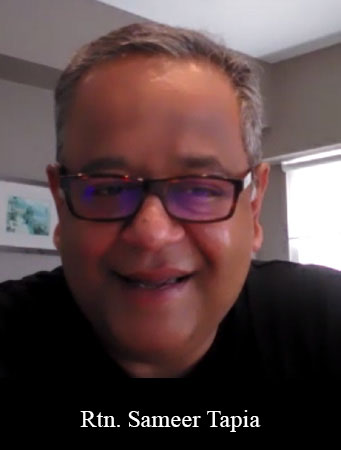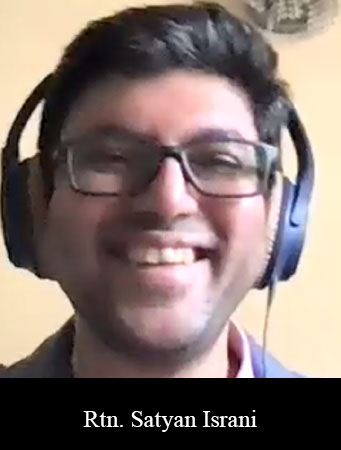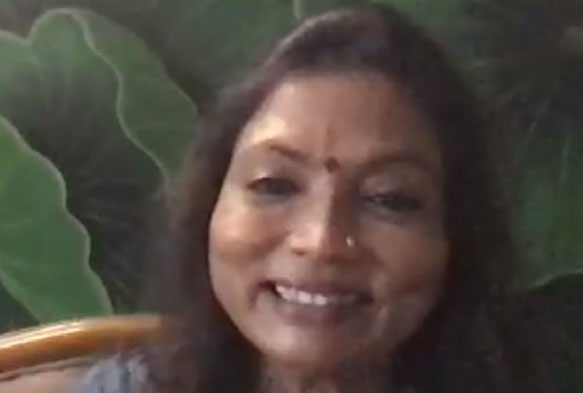
Padmashri Dr. Kalpana Saroj, Chairperson of The Kamani Tubes Limited, Shares Her Journey
I AM FROM A SMALL VILLAGE WITH JUST A HUNDRED HOUSES. MY FATHER WAS A POLICE CONSTABLE AND HE WANTED TO EDUCATE ME BUT SOCIETY DID NOT APPRECIATE OR APPROVE OF SUCH THOUGHTS. IN FACT, SOME FAMILY MEMBERS WONDERED WHAT WAS THE POINT OF EDUCATION FOR GIRLS IF, AT THE END, ALL THEY DID WAS MANAGE THE KITCHEN. MY FATHER WANTED ME TO COMPLETE MY MATRICULATION (10TH) BUT, UNDER FAMILY AND SOCIETY PRESSURE, I WAS MARRIED OFF IN 7TH STD ITSELF.” DR KALPANA CONTINUES, “EVERY GIRL DREAMS OF A WEDDING, BUT I WAS MARRIED OFF YOUNG, BEFORE I KNEW WHAT MARRIAGE IS. DESPITE THAT, I TRIED MY BEST.
However, it was a horrendous experience because they treated me – their 12-year-old daughter-in-law – as an animal to the extent that when my father came to visit me after six months, he could not recognise me. My father being a revolutionary put his foot down and told my in-laws that he would not let his daughter to remain there.
I came back with Baba and he encouraged me to move on and study. He enrolled me in school again. But things got
worse. Society could not digest the fact that a married girl had come back to her parents’ house. Society, as well as
the elders of my family, tortured my father and questioned why he had brought me home.
My dadi tried to pacify my father by saying that all girls had to endure such things and make adjustments. I could see that I would have to face more emotional torture at my own home than at my in-laws. The friends I went to school with looked at me differently.
It was as if I had committed a sin, it was intolerable and I thought it best to die. Consumed by negativity, I drank poison and had to be rushed to the doctor.
When he examined me, the doctor said it would be difficult for me to survive as the poison had spread through my body. I would survive only if I regained consciousness in the next 24 hours, otherwise I would have to be shifted to a city hospital.
The police in charge of that station told the doctor to treat me in the taluka hospital as they didn’t want their station defamed.
I regained consciousness and the relatives started visiting me, asking if I had gone crazy. They reminded me what my parents would have gone through if I had succeeded in killing myself. This made me realise that suicide is not an option, and people don’t care about my emotions. So, I decided to make this life worth it!
When I returned home, I tried a couple of things. Being the daughter of a policeman, I wanted to join the police force too but I was too young. I tried to be a nurse – that did not work out. I even tried to join the military but I was too young even for that. Then, I tried to learn tailoring, to earn about Rs 25-30 from it. But times were tough and there was no business so I failed there as well. I came to a dead end. I wanted to do something but I didn’t know how or what.
I TOLD MY MOTHER TO SEND ME TO MUMBAI SO I COULD WORK BECAUSE LIVING IN OUR VILLAGE MEANT WORKING IN THE FARMS AND I COULDN’T DO IT. PEOPLE KEPT TAUNTING ME THERE AND THINGS WERE WORSENING. SO, AGAIN, MY PARENTS WERE WORRIED HOW A YOUNG GIRL LIKE ME WOULD MANAGE IN MUMBAI AND MY FATHER RESISTED THE MOVE.
I was determined to go to Bombay and told my mother that I would not stop at poison this time. My mother then convinced my father. I had an uncle in Mumbai with poor vision. I thought I might be of help to him. So, I came to his house at Bapat Road, Dadar. It was a slum, and uncle felt it was weird for me to stay there because we had a good house in the police quarters back in the village. He asked me to live with a Gujarati family at the Dadar Railway Quarters.
The family there signed me up to work at a hosiery company and I started earning Rs 2 a day. I was a good tailor; I knew how to use the machine, but I was struck with city life.
It was new to me. Seeing so many boys and girls working in the company was intimidating and I found myself unable to work on the machine.
So, instead of being a tailor, I was assigned to be a helper. After a month, I started working as a karigar, I started earning up to Rs 225. That was the first time I had ever seen a Rs 100 note. My struggle began.
Meanwhile, my Baba faced some problem with his job, so I told all of them to come to Mumbai. I said we would work in the city, earn and live here too as we had no assets in the village.
As the elder daughter, I took my family’s responsibility upon myself. I had Rs 225 saved as the Gujarati family I stayed with didn’t expect anything from me.
They believed that ‘hum betiyon se lete nahi, betiyon ko dete hai’. So I managed to save all my earnings.
I RENTED A HOUSE IN KALYAN AND CALLED MY FAMILY TO STAY WITH ME. I CONTINUED WORK; MY WAGES WERE INCREASED BUT I HAD TO MANAGE MOM-DAD, TWO SISTERS AND A BROTHER IN THAT. THOSE WERE DIFFICULT TIMES, I PAID RS 40 RENT PLUS RAILWAY PASS CHARGES. WE OFTEN SLEPT ON AN EMPTY STOMACH BUT EVEN THEN WE WERE SATISFIED THAT WE WERE ON OUR OWN AND NOT DEPENDENT ON ANYONE.
One such day, my sister felt sick, and we needed around Rs 2000-2500 for her medicine and treatment. I couldn’t manage it and, following the pain, she passed away. There was pain in her eyes, hope that her didi would save her, she didn’t want to die. I felt helpless. That’s when I understood the importance of money. I had already lost one sister, and if I did not earn, I could lose my mom-dad tomorrow.
Living in poverty was not an option, so I thought hard what could be done. There were a few government schemes that could be beneficial. So I took a Rs 50,000 loan under a scheme and started a business. I started earning well. However, the thought crossed my mind that there were so many young people who did have employment.
THOSE DAYS GOVERNMENT JOBS WERE THE ONLY WAY TO GET AHEAD AND THERE WERE NO JOBS AVAILABLE. SO, I THOUGHT, MAYBE I COULD GIVE LOANS TO HELP THE YOUTH THE WAY I HAD BEEN HELPED VIA A SCHEME, TOO. SO, I STARTED SUSHIKSHIT BEROJGAAR YUVAK SANGHATNA TO GATHER THE YOUTH, MAKE THEM AWARE OF GOVERNMENT LOANS AND SCHEMES, ASK OFFICIALS TO EDUCATE THE YOUTH REGARDING THE PROCESS.
Those who understood, grabbed the opportunity, a few refused and stuck to jobs. I also tried to help a few with jobs in the Mantralaya, Police Department and wherever possible.
With this, people started coming to me with their problems in the hopes that I would solve it. I got a plot in Kalyan, and it took two years to clear legalities. The plot I bought for Rs 1,50,000 was worth Rs 50 lakh by the time everything was cleared. I didn’t have enough money to develop the plot so I welcomed a partnership of 65:35. I developed the building and step by step started progressing. I became a builder, meanwhile I also became the Director of a sugar factory. My social activities and business associations were running side by side.
In the midst of this, some workers from Kamani Tubes Ltd. heard about me. The company was being liquidated and the workers asked me to rescue it with the hope that ‘madam mitti ko bhi haath lagaa de toh sona ban jaayega’. So, there were three companies: Kamani Engineering, Kamani Metals and Kamani Tubes. Kamani Engineering was taken over by Harsh Goenka, Kamani Metals was auctioned by the High Court and Kamani Tubes was due for liquidation. The workers didn’t want that to happen. I told them that I did not have that background but they had faith in me. I thought about this; the employees who got a 100 per cent bonus were the same workers who were now fighting against hunger and poverty. That touched me, I could relate to it. I decided to give it a shot. I discussed it with my well-wishers who all resisted my choice and warned me of the risks. But I was determined to help the workers.
Kamani Tubes is a Supreme Court baby; in ’87, the SC handed the company to the workers but they could not make anything good out of it. The Supreme Court tried to make way for the new promotor when I entered. I made a 10-member team with professionals who came with me out of respect.
The company had a loan of Rs 107 crore, 140 litigations and 2 unions. In such a situation, with a sick industry like this, the workers did not want to come. But fortunately, out of respect, 10 people joined me. This was a time when Sharad Pawar was the Chief Minister and he had invested about Rs 70 lakh on behalf of the government. So, in a board meeting with the bankers and a government director, a BFR code director, I put forth a scheme, answered their questions. Perhaps they liked my answers and appointed me as a President. Now, this involved money. I had to deposit Rs 2.5 crore into IDBI Bank and all the expenses were to be taken care of. On top of it, it was not even clear if the court would give you the company or not. If not, then I was in the same line as the unsecured creditors. I agreed to all the terms and put the scheme to work in 2000. The work continued till 2006 which also gave me time to study the whys, hows and whats of the Rs 160 crore loan.
I learnt that the Rs 160 crore loan was from all the penalties and interest; the principle amount was small but had become big due to these reasons. I thought we should work on reducing it. We met the Finance Minister in banking, I told him of the situation, requested that if we took over the company, we could at least pay back the principle amount and if not, then even the bank would not get anything as the company did not have any assets. They agreed, we had a meeting in IDBI bank, our operating bank, and after everything they waived off the penalty and interest. The bank gave an OTS [one-time settlement] of a year and if we could pay that back in the given year, they would waive off another 25 per cent. This was a boost and I felt encouraged to work harder.
From 2000 to 2006, we had hearings and on March 21st, 2006, the court gave me the scheme and I became the chairman of the company. I thought all that hard-work had paid off but the court ordered that we needed to be out of the SICA [Sick Industrial Companies Act] by 2011 which meant: start the company, employ workers, end all liabilities. My hardships started all over again. I had to take a land in Wada, shift the Kalyan plant there which took another two years because meanwhile, in the July 25th rains, everything was destroyed. So, we had to plan from the start. We managed to set-up the plant and in 2011 we were out of SICA.
The company was not at its best but we were able to deal with all the liabilities in 2006 because workers needed salaries to work, so, despite the court’s order of three years, I managed to give the workers money in a mere three months. The promises made to the bank were met and finally the company was started and in 2011 it was out of SICA.
After this, the struggle was to restore lost pride. There are a few dues of rents which are still pending. I had a land in Bangalore which was to be developed. From 2006 to 2010 people caused so much ruckus which was finally solved in 2011. Today the property that is getting ready there is worth Rs 500 crore. Me and my partners are all managing well.
We have also started an aviation company in Nagpur at Vihaan. We wrote a letter to the Prime Minister for a 35-acre land there, and he wrote back to the Chief Minister about it. So, it is about to start. Not only will we have an aviation school, we will also be able to repair flights. There aren’t many such places in India and, as a result, our planes are sent abroad for repairing. A lot of our nation’s funds can be saved and we are also thinking of providing pilot and air hostess training.
My son went to Germany for his pilot training which cost Rs 50-60 lakh then – today it must be more. All this expenditure can be curbed and students can take the best training here. I have a nice Air India group, Mr Vinay Gambole, Pravin Nikhade, and many more who are with me in this project. Many people tell me that I don’t even have an MBA, how do I manage? The key is, a good team! I have such good people around; it is possible that in the coming six months we might inaugurate it.
Now, I don’t limit myself to business, I am keen on doing social work as well. My sanghatna works for the unemployed, mainly. When I was in London, I saw the house where Dr. Babasaheb Ambedkar had been educated. I had gone to France before that and so when I landed in London, I wanted to see the house where he studied, the library he went to, so, this was my hobby. When I went there, surprisingly, I saw a board which read, ‘FOR SALE’. We were worried that if it was taken over and turned into a hotel, we would lose the legacy and purity of that land forever. So, we tried to work out a few details with the Commissioner of Social Justice who was accompanying me. He suggested we write to the government and have certain funds allotted to save it.
We returned to India and started to work in that direction. At first, not much was happening but in 2014, with the Modi Government coming in power, we became hopeful of change. I was the Director of Bhartiya Mahila Bank and I had a board meeting on December 31st, 2014. I wrote to the PMO requesting a meeting with the PM and on December 31st, I got the appointment at 15:30 hours. I was very happy. I had five minutes to pitch and I was already two minutes late. The PM asked what it was about and I said, “I want to save Dr Babasaheb Ambedkar’s London house that is being auctioned.” A few people said in the room said that the government had enough work to do than look into these matters. I agreed, but pressed my point that Dr Ambedkar was a different personality. He completed an eight-year course in six years. He was a brilliant visionary who gave us our Constitution and that is why saving the house was important. As I finished my sentence, Modi ji asked me: “What is the price?” I said, Rs 40 crore. And he said, “Chalo le liya!” For us it was a dream come true because it all happened so quietly, without any resistance. He wrote to the Maharashtra Government as Dr. Ambedkar was from Maharashtra and within a year the house was saved.
During a programme in Vigyan Bhavan everyone saluted PM Modi for this gesture. He said, “The credit for this goes to Kalpana Saroj. Hum toh bhai so rahe the, Kalpana ji aayi unhone kaha Babasaheb ka ghar bik raha hai aur hum jagg gaye aur woh ghar le liya!” So, I am really grateful to PM Modi for that. Similarly, during the 125th Anniversary of Dr. Ambedkar I asked him if we could celebrate it in UN because in 1949, Dr. Ambedkar had wanted to discuss social issues in UNO which did not work out for some reason.
So, I wished that his 125th Jayanti be celebrated there. And it did very well.
SO, TO SUM UP, I AM FROM A VERY SMALL VILLAGE, I DON’T HAVE AN MBA, I DON’T EVEN HAVE PROPER EDUCATION BUT I AM STILL DR. KALPANA SAROJ. I HAVE SO MANY BUSINESSES BUT THERE WAS A TIME WHEN I USED TO WALK FROM KURLA TO CHEMBUR BECAUSE I COULD NOT AFFORD THE BUS. SO, THIS WAS THE STRUGGLE WHICH GOT ME HERE BECAUSE I WAS DETERMINED.

